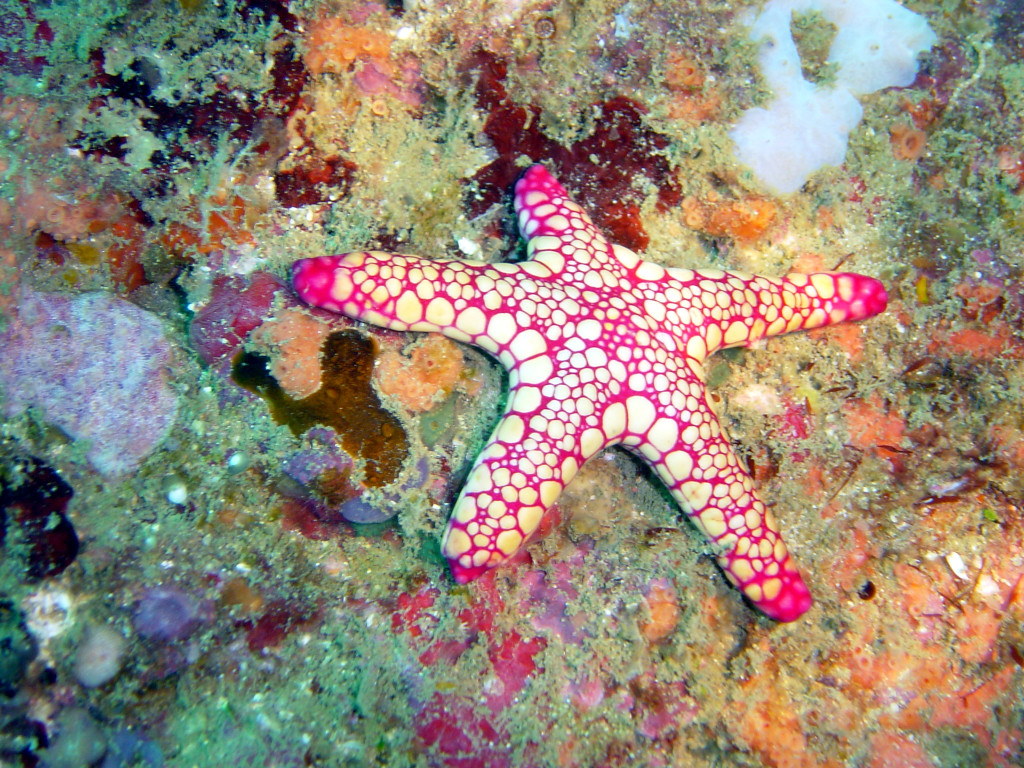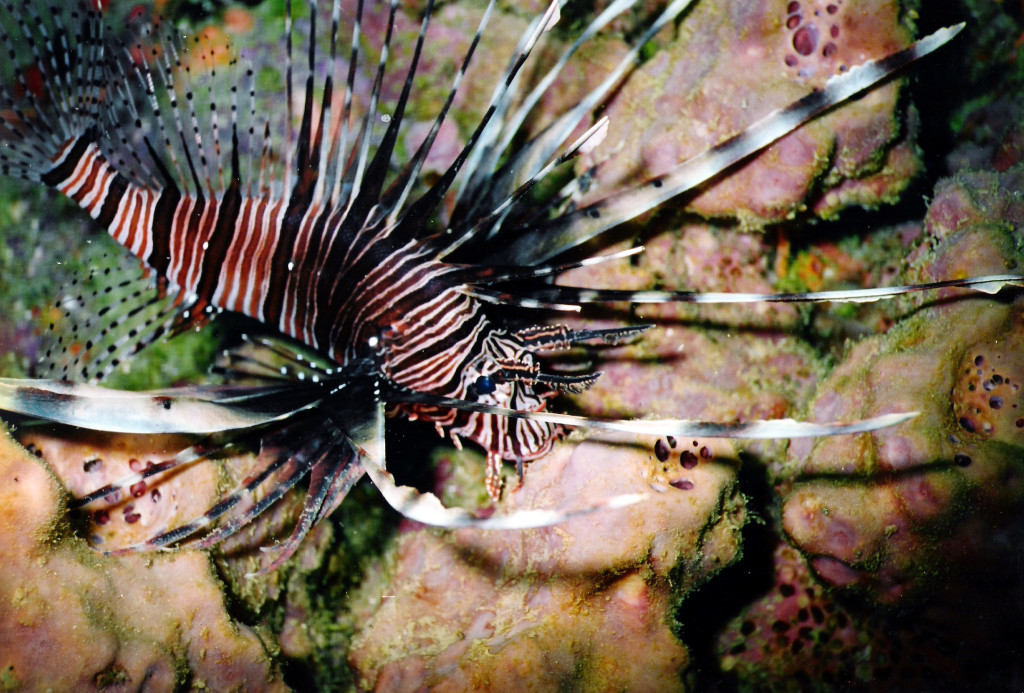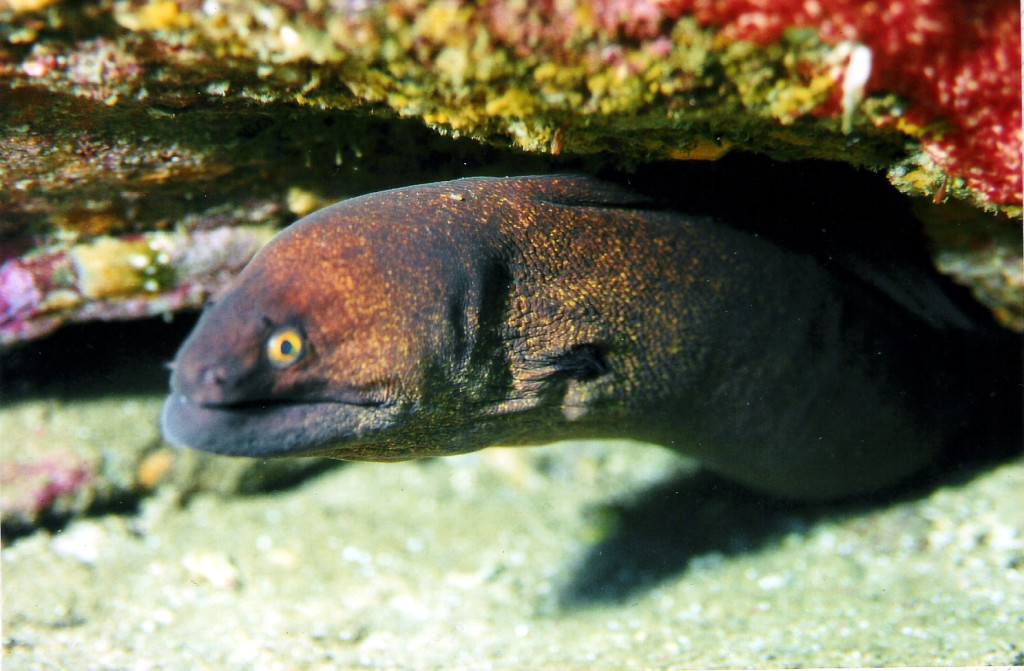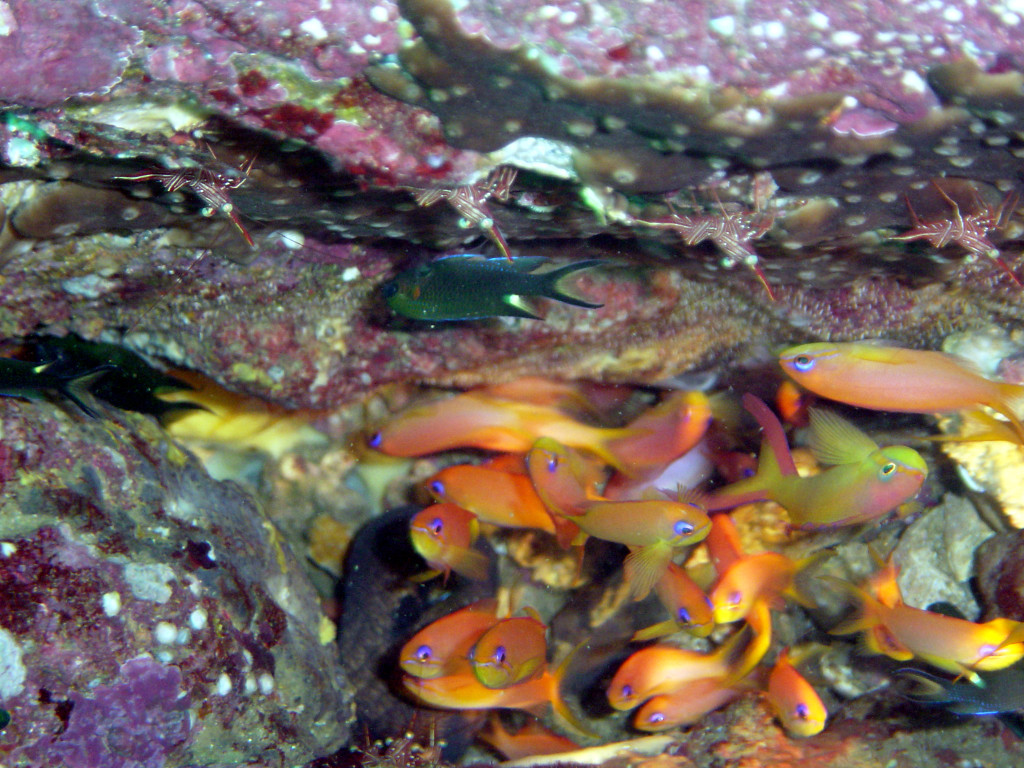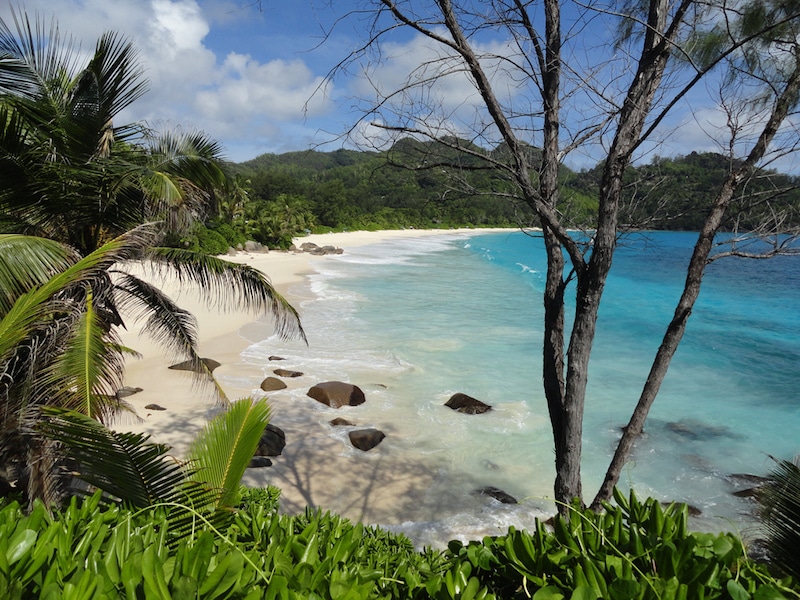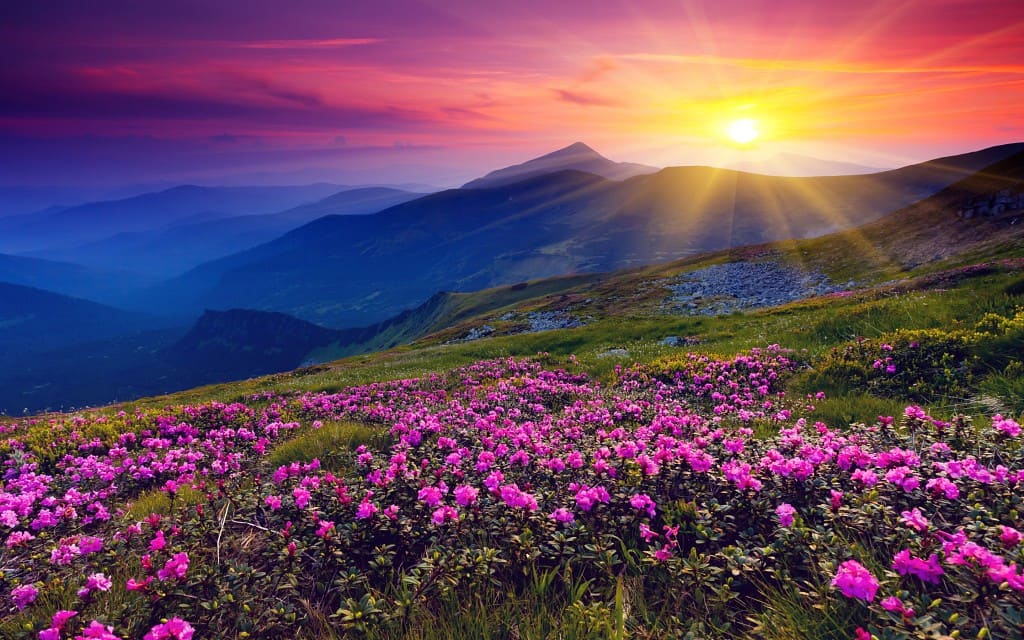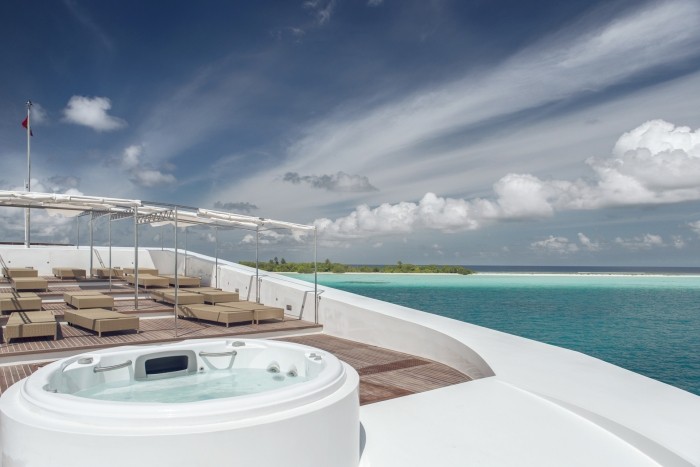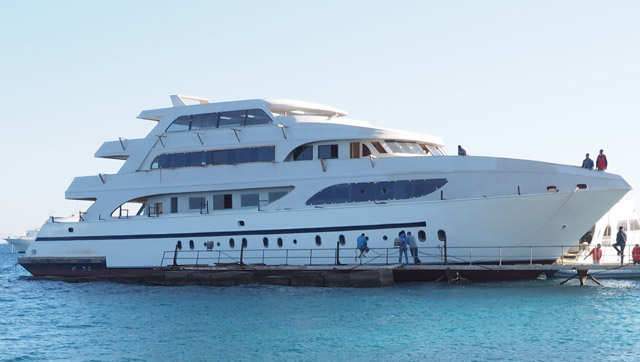Destinations
Diving in Sri Lanka
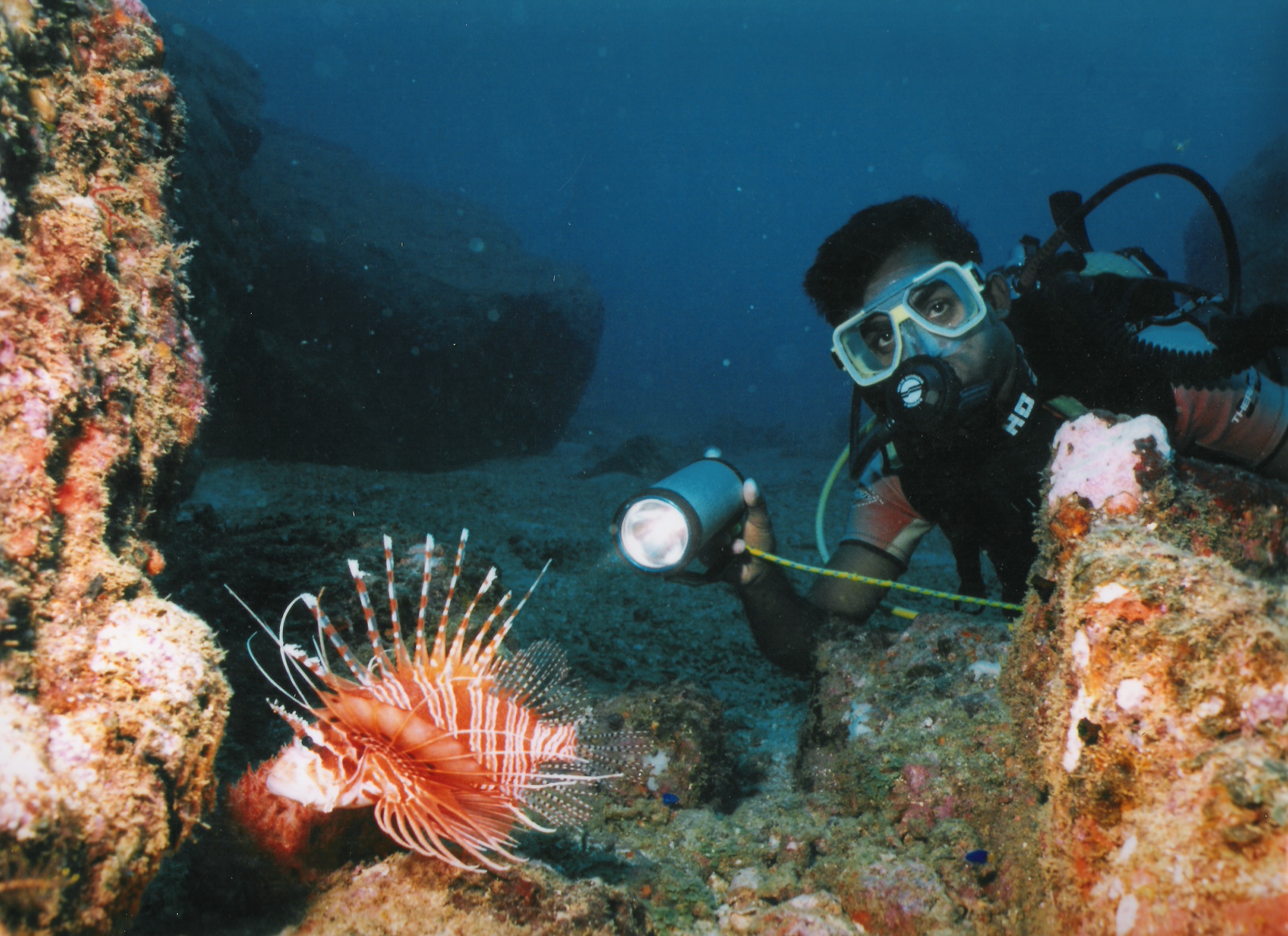
Basking in the warmth of the Indian Ocean with its white sandy beaches, tall whispering palm trees and lush green forests lies the island of Sri Lanka. This beautiful picturesque country has become a major tourist destination for both holiday makers and divers alike.
The clear turquoise water that surrounds this tropical paradise tantalises divers with a blend of colourful reefs, historical wrecks and a rich, diverse range of marine life that includes Mantas, Eagle rays and Whale sharks.
The pace and way of life in Sri Lanka is relaxed. Everyone greets you with a friendly smile as they go about their business. Cows, monitor lizards, mongoose and monkeys wander freely through the rustic villages, and water buffalo wallow in the nearby paddy fields.
All around you the history of Sri Lanka is evident; be it religious, architectural or colonial, there is always some archaeological beauty that reminds you of the island’s past. With so much history, so much culture and with so little time to see it all I was going to find it difficult to know where to begin.
My brief tour of Sri Lanka began at the luxurious Bentota beach hotel on the Southwest side of the island. The hotel is conveniently situated on a narrow stretch of land where on one side you have the Bentota river, and just metres away on the other, the warm water of the Indian Ocean. It was arranged that for the first half of my tour I would spend my time diving and exploring the nearby reefs, and the second half visiting some of the many places of interest that Sri Lanka has to offer.
The hotel dive centre prefers to do two tank morning dives, which is perfect for those of us who prefer to spend our afternoons exploring the surrounding countryside in more detail.
All of the sites that I visited were boat dives and less than 10 minutes away from the hotel. Crossing the mouth of the river where fresh water meets salt water can prove challenging, but luckily our skipper was well experienced and knew when and where to make a dash for the open sea.
The dives here are suitable for all levels of experience from novice divers looking for scenic shallow unchallenging dives to those more experienced divers looking for a fast drift or a little more depth.
On the first of our dives as we made our descent we stopped at 10 metres to watch a display of sheer excitement – shoals of fusiliers rushing past with trevallies and Jack fish in hot pursuit. I watched in awe as the predatory fish forced the fleeing fusiliers in to a whirling mass of mayhem. We could even hear a continuous sound of faint thuds as the predators smashed their way into the ball of bait from all directions to catch their prey. All of this was occuring just a couple of metres or so from where I was hovering. The mayhem lasted for just a few minutes, but phew, what a way to start my diving holiday.
Although Sri Lanka is surrounded by the Indian Ocean, the topography of the ocean floor is somewhat different to that of other nearby islands. The dive sites here although colourful are mainly rock formations with small areas of hard coral and sponges. To compensate for the lack of soft corals there is a whole host of marine life of the macro variety just waiting to be discovered. Separating the rocks are a series of gullies between a metre and two metres wide that descend in to a sandy seabed to a depths of 30 metres and deeper. It was these gullies that were going to be the main focus of our dives. The rocks’ surfaces are covered in a thin layer of algae on all sides and have the odd hard coral growth here and there. If you look closely you may find small crustaceans such as Porcelain crabs and Reef crabs hiding amongst them.
Although we had fish of all shapes and sizes swimming around us, it was the smaller critters that our dive guide Sujith wanted us to see. He has dived these sites hundreds of times and new exactly where to look. On one of our dives we came across seven different species of nudibranchs, each one more brightly coloured and flamboyant than the last, a rare sea moth lying motionless on the reef that was so well camouflaged by its surroundings that it was almost impossible to spot, and a large contingent of hingebeak shrimps hiding in one of the crevices with a moray eel for company.
A titan trigger fish with its sharp teeth and strong jaws could be seen biting into the rock, reducing each mouthful to grains of sand, while a lone Porcupine fish kept a safe distance but swam along with us.
On all of the dives there was little or no current which allowed us plenty of time to explore all the nooks and crannies. Moray eels, painted Lobsters, red fire gobies and small cleaner wrasse could be seen as we explored the many overhangs. Red tooth snappers and oriental sweetlips are here in abundance along with hump-headed parrot fish. We found octopus peering at us from the safety of their lairs, watching as we swam past. Around us there were schools of powder – blue surgeonfish, and close to the seabed there were Sri Lankan rabbit fish weaving amongst the rocks and feeding on the algae. I came across what I believed was a saddled pufferfish, but on closer examination of the photo once we had returned to the boat, Sujith informed me that it was in fact a mimic filefish. These harmless little creatures take on the looks of other more poisonous fish to protect themselves from predators. Exploring the maze of gullies I was surprised to see so many varieties of shell fish.
I watched spellbound as a cowrie laid its eggs on to a Sponge, and I can tell you that this rare spectacle is well worth watching. The gastropod literally comes out and completely covers its shell with what looks a bit like a black velvet blanket decorated with gold sequins. Getting as close as we dared without disturbing the delicate creature we could just about see the eggs as they were being attached to the sponge, and then within an instant and without warning the creature disappeared back into the safety of its shell.
At the other end of the spectrum large pelagic animals such as Mantas, Eagle rays, Sting rays and Whale sharks make regular unannounced but welcome appearances. These gentle giants of the ocean, unperturbed by our presence, appeared to enjoy interacting with divers as they glided past just millimetres from our heads time and time again. So while you are exploring the reef, every now and again look out in to the blue – you never know what you might find swimming alongside you.
Between dives we spent our surface intervals on the boat. While we relaxed, had a cup of tea and checked our photos the crew were busy changing our tanks and getting ready for the next exciting dive.
As I was only diving in the mornings I had the afternoons free to do as I pleased. Although I could have relaxed by the pool or sunbathed on the white sandy beach, I preferred to spend my time visiting some of the local attractions. For me a trip to the turtle sanctuary in nearby Kosgoda was a must, and being just a 15 minute Tuk Tuk ride from my hotel it was ideally placed. The rescue centre was severely affected by the Tsunami four years ago, but after a lot of hard work and dedication this worthwhile centre is now back up and running and saving the lives of thousands of turtles every year. There is no admission fee – the centre relies entirely on donations the public and the generosity of its visitors. You are guided round the sanctuary and given talks on the various species of turtles that visit the island and then shown some of the patients that have been lucky enough to benefit from the care and expertise of the staff. You may be invited as I was to help release some of the rescued baby turtles, but they are released under the cover of darkness so be prepared for what is often a long night.
Another worthwhile afternoon excursion is a boat trip to one of the many secluded coconut factories that can be found along the banks of the Bentota river. Along the way it is possible to see large water monitor lizards basking on branches high up in the trees and birds such as the colourful King fisher can be found fishing. Crocodiles are occasionally spotted resting at the entrance of the Mangrove swamps. The factories are family owned and run with up to three generations of a single family all playing their part in the production and distribution of ornaments, cooking utensils and rope. A tour is highly recommended.
After five days of fantastic diving I was now ready for the second stage of my tour. I was to spend the morning visiting the world famous Elephant orphanage at Pinnawala before moving on to my hotel in Kandy. The drive would take us about four hours, so we had to leave early. My guide Rohan decided it would be a good idea if we left the normal tourist route and took a slightly longer scenic drive through the countryside, passing through small towns and villages on the way. The scenery around me was breathtaking; paddy fields on one side of the road and the lush greenery of the jungle on the other. I was travelling through the heart of Sri Lanka where wild animals wander freely through the rustic villages interacting with the local communities.
When we reached Pinnawala we found the Elephants bathing in the cool water of the river Maha Ova which isn’t too far from the orphanage. Twice a day the Elephants walk through the narrow streets passing onlookers and shop keepers as they make their way to the river.
Tourists gather to watch as these magnificent creatures relax without any restraints in their natural habitat. It is amazing; there are no fences to prevent them leaving the river and returning to the jungle – these semi wild Elephants could at anytime wander off, but they choose not to. The government sponsored orphanage was established in 1975 with just seven baby elephants. Over time and with more and more baby elephants being found alone or injured in the jungle the centre has now grown to an impressive herd of 86 animals. Be prepared to spend the day here helping the keepers look after and feed the babies.
It was soon time for me to make my way to Kandy so that I could check into my hotel and after a wash and brush up visit the Sacred temple of the Tooth relic. The Hotel Suisse was to be my base as it is ideally situated in the centre of the city and close to all of the major attractions, including the Sacred temple of the tooth, the market town and the railway station. Built by the British 170 years ago as a meeting and resting place for traders of gems and spices, the 93 roomed property was purchased by a Swiss woman who lived in Germany (hence the name Suisse Hotel). At the turn of the 20th century the property was transformed into a hotel, and although modern facilities were added, many of its original features have been retained. A night or two here is recommended.
Sri Lanka has no less than seven UNSECO world heritage sites, each one proudly displaying its religious or colonial past. The Portuguese were the first Europeans to colonise the country during the 16th century followed by the Dutch 150 years later. The British gained control of the Island at
The end of the 18th century and remained until 1973 when Ceylon as it was then known gained its independence. But despite the legacies of the Catholic and Christian faiths that have had a controlling influence, the Islanders’ religious beliefs have remained unchanged. Buddhism is the main religion throughout Sri Lanka with temples and monuments dominating the landscape.
The day before I arrived in Kandy, 450,000 people had gathered from across the world, with queues stretching for miles as they waited patiently for hours in the scorching heat to catch just a fleeting glimpse of an iconic symbol of their religion. The lord Buddha’s temple is the most sacred of all temples of worship in Sri Lanka. Legend has it that when the Lord Buddha died, small sections of his bones were sent to various locations around the world in a bid to promote Buddhism. A tooth and part of a shoulder blade remained in Sri Lanka encased in a “Stupa” – a small golden bell shaped casket that is decorated with three rings. Every six years the tooth is taken from the casket and placed on display so that people can pay homage to their faith. I however wasn’t as lucky. I arrived just a little too late; the tooth had been placed back into the safety of the “stupa” and secured under lock and key in a room at the centre of the temple until the next time.
The following day we made our way to the Royal Botanical gardens of Peradeniya. These beautifully maintained gardens are home to a wide variety of tropical plants, trees and spices. For those of you who are tea drinkers it may interest you to know that it was here in 1824 that the British experimented with the idea of producing tea. Today Sri Lanka is responsible for producing the world’s finest tea.
After checking out of the hotel we were to take the winding roads to the Dambulla caves. Again the journey was scenic, lush green forests on one side, jungle on the other with remote houses and villages dotted here and there along the dusty unmade roads.
Reputed as having the largest antique painted surface in the world and 150 sculptures of the Lord Buddha, the Dambulla Cave Temple will almost certainly capture your attention. There are five caves; each one has a number of sculptures of the Lord Buddha adorning the walls and delicate fresco paintings covering the ceilings. These masterpieces of ancient times tell the story of the Lord Buddha’s life. The tranquil surroundings are also home to a Buddhist monastery that dates back to the third century BC.
After spending the morning here admiring the works of art and learning more about Buddhism, we left to visit the ancient ruins of Polonnaruwa before heading for my next hotel in Sigiriya. You will find a number of statues of the Lord Buddha adopting various postures that have been cut in to the rock, some measuring over 7 metres tall. Under the rein of king Parakramabhu the Great during the 11th century, a reservoir measuring 5600 acres was built on the western side of the city to capture the rainfall of the monsoons. A famous quote from the king says “Not one drop of water must flow into the ocean without serving the purpose of man”. This manmade lake is still being used today.
On arrival at the Hotel Sigiriya I was shown straight to the bar – not because I looked as if I needed a beer, but because the views from the terrace lie in the shadow of the Sigiriya Rock Fortress, a monolith widely regarded as the 8th wonder of the world. This luxurious hotel has won awards from virtually every department of tourism around the globe. The 80 rooms are spacious, tastefully decorated and air conditioned. As the hotel is situated on the edge of the jungle it was no surprise that a troop of Langur monkeys made an appearance, entertaining the guests with displays of aerobics. After a good night’s sleep and a hearty breakfast I was ready for the challenge ahead.
As we crossed the moat which was once guarded by crocodiles and walked along the path towards the Rock Fortress, my guide Rohan informed me that to reach the summit we would have to climb 1100 steps. On the way we would see fresco paintings of half naked women that adorn the wall of caves and overhangs, and the remains of the army barracks. Every now and then it was possible to stop for a rest and drink of water, and to take in the views. The steps gently ascend around much of the rock, coming to an end on the north face at a point known as the lions head. The huge paws are the only remnants of the lion that served as the entrance to the palace and fortress. It is between these paws that we climbed the last few hundred steps to the plateau. After spending a couple of hours exploring the ruins and looking out across the vast landscape, it was time to retrace our steps and make our way back down the rock. Be prepared to spend the day here as the climb up can take an hour or two, and the climb down at least an hour.
As my tour of Sri Lanka was unfortunately coming to an end, it was decided that I should spend my last night in the Wallawwa hotel in Katunayake which is just a 15 minute drive away from the international airport of Colombo. This 18th century colonial property has recently been transformed into a luxurious hotel with total relaxation in mind. There are 14 en –suite rooms, each with its own private veranda. After a long drive from Sigiriya and dinner on the terrace overlooking the secluded gardens I was ready to be pampered with a massage in the spa.

Blogs
Alonissos: The complete diving destination (Part 2)

On our final day of diving in Alonissos we were being treated to the area’s most famous site and a true bucket list dive. The ancient shipwreck of Peristera is a large merchant ship from Classical times carrying a cargo of wine amphorae, which sank around 425BC. The wreck was discovered in 1985 and subsequently excavated by archaeologists during the 1990s and early 2000s. The Athenian-built ship is one of the largest of classical antiquity and its discovery proved that merchant ships over 100 tons traveled the Mediterranean as early as the 5th century BC. The wooden parts of the ship have not lasted the test of time, but many of the 4000 amphorae which made up the main cargo can be found on the seabed between 21 and 29 meters deep, tracing out the shape of the original vessel.

As a hugely important historical site the wreck is very tightly protected and an impressive underwater camera system has been installed to ensure the preservation of this historical site. The cameras have wipers to keep the lens domes algae free and have IR sensors for nighttime. An AI “brain” allows for remote monitoring which can identify species and conduct biodiversity data collection, and spot any unauthorised dive activity. The live camera video feeds are also available to the public to observe the wreck on the website https://nous.com.gr/naxly_project/peristeras-ancient-ship-wreck/
It is a true underwater museum, with informative signs and markers to label the different artefacts and route markers which help divers maintain the correct height and distance from the amphorae (a minimum of 2m away at all times). Diving tours are scheduled in advance so that an underwater archeologist can meet everyone for a briefing prior to entering the water and divers are then observed with the underwater CCTV system throughout the dive to ensure all artefacts remain untouched.

On our dive we met at 10 o’clock to fill out the special paperwork and take the boat over to Peristera Island, where we met the archeologist team based in Stena Vali. They gave us our briefing and returned to shore to watch our dive on the screens in the headquarters. Once we had the ok, we kitted up and jumped in, swimming directly to the mooring buoy. Our guide Angel gave us the signal and we submerged maintaining a hand on the rope for the entire descent as instructed.

On our dive we descended the mooring line in excellent visibility and the outline of the wreck soon appeared below us, followed by route marker A and the first of the monitoring cameras. Our first impression was not only what a unique dive this was, but also how well preserved the amphorae were, with the shapes clearly defined and looking in great condition for items over 2500 years old! The dive was a simple one, swimming clockwise around the wreck, observing the signs and artefacts, then repeating the circuit at a slightly shallower depths. To witness something so incredibly old, in pristine condition and with state of the art museum technology functioning perfectly in the sea was mind-blowing and it was an absolute privilege to visit. Some of our family were even able to watch us during the dive via the camera feed website from their living room across the globe!

Due to the wreck’s protected status permission was not granted to take and share photos except for our personal use so we are unable to print them, but we hope our description is enough to inspire you to go and see it in person for yourself. It was truly one of the most amazing dives we’ve ever done. The excellent news is that with the success of this project, plans are underway to open up several more ancient shipwrecks located within the Sporades Marine Park to divers in the coming years, which gives us a perfect excuse to return very soon!

On return to the boat, we made the short trip to Agios Petros for our second dive. This site was a fairly shallow dive around a rock formation close to shore. A very pleasant fin brought us round to the best feature of this dive, a small pile of amphorae, presumably from one of the ancient wrecks prior to their protection. Here we were able to look closer at the shapes and take some close up photos. The rocks were home to moray eels and several shy octopus and well as shoals of damselfish and wrasse. It was a lovely and relaxing dive to round out the trip.

In the afternoon we took a trip to the Alonissos Underwater Museum Peristera shipwreck information centre located in the Old Village. The centre had a 3D model of the wreck, amphorae replicas, information displays and a Virtual Reality Dive of the shipwreck. The VR system is quite incredible with a very detailed dry dive experience, perfect for those unable to do the real dive itself. A trip to this fantastic centre was a wonderful addition to our trip and had the added bonus of giving us another excuse to wander the picturesque alleys of the Old Village and stop for an ice cream at a cafe overlooking the coastline.

Perhaps one of the best things about Alonissos as a holiday destination is that the island offers so much more than great diving. We’ve always considered a full day of diving pretty perfect, but here we were delighted to take the afternoons off to go and explore! We found stunning secluded beaches, mountain drives through the olive groves, picture postcard fishing villages, fabulous tavernas serving great local cuisine and one of the prettiest old towns you could hope to stroll through. We felt we had found our own personal paradise.

Mike and I had high hopes for Alonissos and it easily exceeded our expectations in every way. We throughly recommend visiting for yourselves and we will certainly be back again next year!

Thanks to:
Alonissos Triton Dive Center https://bestdivingingreece.com/
Albedo Travel https://alonissosholidays.com/activities/
Paradise Hotel https://paradise-hotel.gr/
Alonissos Municipality https://alonissos.gr/en/
Blogs
Alonissos: The complete diving destination (Part 1)

In June we were incredibly fortunate to be invited to dive in Alonissos, a small Greek Island in the Sporades island chain located in the North Aegean Sea. While I have long been a big fan of the Greek Islands as a great holiday destination, I had not had the opportunity to do any diving on previous visits and Mike and I were extremely excited to see what Alonissos had to offer both above and below the surface!

The Sporades are easily accessible via the airport in Skiathos (the first island in the chain), which is served by Jet2 flights from all major UK airports from May through October. Numerous ferries and charter boats make island hopping from Skiathos Town a breeze. After an hour boat ride, the picturesque port of Patitiri was a wonderful introduction to Alonissos, where we were met by our gracious hosts Kostas of Albedo Travel and Dias of Alonissos Triton Dive Center. Mike and I were delighted to be staying at the Paradise Hotel, aptly named for its stunning views over the sea and great location for walking to the waterfront.

Alonissos is beautifully situated in the National Marine Park of Alonissos and the Northern Sporades, the largest marine protected area in Europe. The surrounding seas offer fabulous marine life, including incredibly rare species such as the Mediterranean monk seal. They boast deep walls covered in gorgonians and sponges, stunning topography with caverns, swimthroughs and pinnacles, and the first accessible ancient shipwreck from 500BC!

In locations where historical sites have been reported, the waters are largely restricted, but with collaboration between government, underwater archeologists and dive centres, incredible underwater museums are being created for a truly unique diving experience. Alonissos is home to the first of these, the Ancient Shipwreck of Peristera Accessible Underwater Archeological Site. The chance to dive into history (along with reports of healthy reef life and amazing underwater topography) meant Mike and I were keen to get in the water.

Our introduction to the diving around Alonissos was at the Agios Georgios Pinnacles, in the channel between Alonissos and Skopelos. This fantastic site was named “The Chimney,’ and proved to have a huge amount to see. We got to a decent depth here (over 25m), and marvelled at a colourful reef wall with a wonderful swim through whose rocky walls were absolutely covered with life. As well as brilliant topography there was no shortage of macro life here. We saw numerous nudibranchs, five different species in total. The second dive at Mourtias reef nearby was a shallower dive along a nice wall with lots of crevices. Several moray eels and grouper called this site home. We enjoyed looking in the crevices for lobster and smaller benthic life, such as cup corals and tunicates.

Our itinerary allowed us two dives a day with afternoons left to explore the island with our hire car and evenings to enjoy the famous Greek hospitality. This proved to be a lovely mix of in-water and land based diversions.

The next days diving to the Gorgonian Gardens and Triton’s Cave was to be even better! These two stunning sites are nothing short of fabulous. The Gorgonian Gardens was a deep wall near to the Agios Georgios islands. The ever-present currents in this deep channel meant that the sea life was amazing … the namesake Gorgonian sea fans dotted the wall at a depth of 30 to 50 meters, getting ever larger the deeper we went. Above 30m was by no means less beautiful, with sponges, corals, scorpionfish, moray eels and some rare and colourful nudibranchs.

The second shallower dive of the day was to Triton’s Cave or the Cavern of Skopelos, on the east side of that island. The spectacular rock formations had wild striations both above and below the water making a truly epic topography. The cavern entrance was at 14m, and big enough for a buddy pair, winding up to 6m and passing two beautiful windows out into the blue. Emerging from the cavern, the light at the shallower depths and the incredible rock formations made for a fantastic gentle swimming safety stop and we all surfaced by the boat with massive grins.

Check out our next blog :Alonissos: The complete diving destination (Part 2)” to hear about our amazing dive on the 2500 year old Peristera Wreck!
Thanks to:
Alonissos Triton Dive Center https://bestdivingingreece.com/
Albedo Travel https://alonissosholidays.com/activities/
Paradise Hotel https://paradise-hotel.gr/
Alonissos Municipality https://alonissos.gr/en/
-

 News2 months ago
News2 months agoIconic SS United States to become the World’s Largest Artificial Reef
-

 News3 months ago
News3 months agoBook Review – 52 Assignments: Underwater Photography
-

 Gear News3 months ago
Gear News3 months agoDYNAMICNORD – New German diving brand enters the British market
-

 News3 months ago
News3 months agoExploring Cenote El Pit: A Diver’s Dream
-

 Gear News3 months ago
Gear News3 months agoTry BARE drysuits (and maybe even win one!) this Friday with Sea & Sea at North West Dive Fest
-

 Marine Life & Conservation3 months ago
Marine Life & Conservation3 months agoBook Review: Coral Triangle Cameos
-

 Blogs2 months ago
Blogs2 months agoDive the Egyptian Red Sea this Autumn with Regaldive
-

 News3 months ago
News3 months ago2024 Ocean Art Underwater Photo Competition Announced


